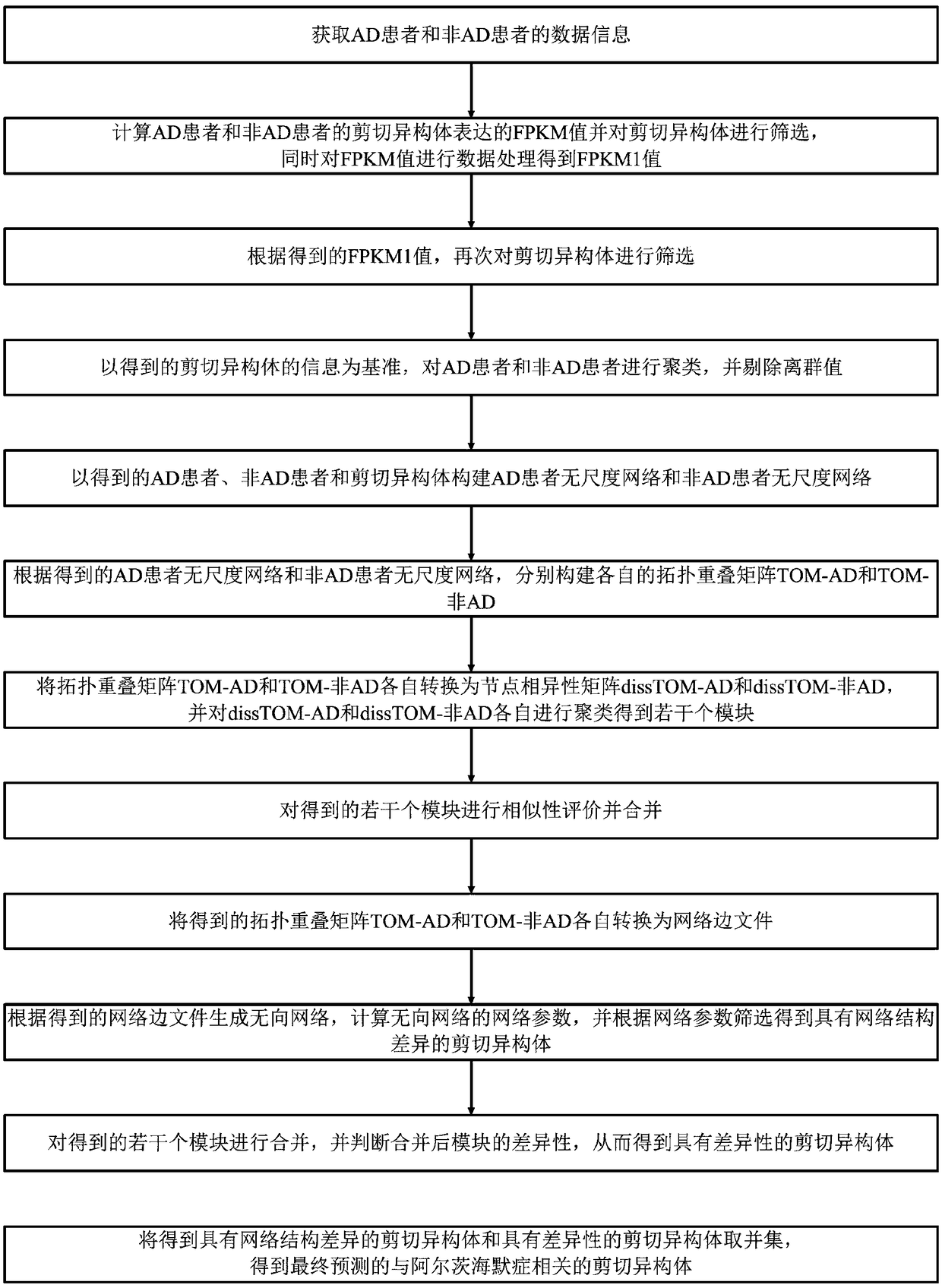Alzheimer's disease related gene prediction method
A prediction method and gene technology, applied in the fields of instruments, hybridization, biostatistics, etc., can solve problems such as inability to correspond to diseases and affect the understanding of diseases
- Summary
- Abstract
- Description
- Claims
- Application Information
AI Technical Summary
Problems solved by technology
Method used
Image
Examples
Embodiment Construction
[0062] Such as figure 1 Shown is the method flow chart of the method of the present invention: the method for predicting Alzheimer's disease-related genes provided by the present invention includes the following steps:
[0063] S1. Obtain data information of AD patients and non-AD patients; specifically including disease information of AD patients and expression information of spliced isomers in patients, as well as disease information of non-AD patients and spliced isomers in patients Express information within;
[0064] S2. Calculate the FPKM value expressed by the isoforms of AD patients and non-AD patients, screen the isoforms according to the obtained FPKM value, and perform data processing on the FPKM value to obtain the FPKM1 value; specifically The following steps are used for screening and processing:
[0065] (1) Use the following rules to screen splice isomers:
[0066] For all AD patients, if the splicing isomer i satisfies the following formula, the splicing isomer...
PUM
 Login to View More
Login to View More Abstract
Description
Claims
Application Information
 Login to View More
Login to View More - R&D
- Intellectual Property
- Life Sciences
- Materials
- Tech Scout
- Unparalleled Data Quality
- Higher Quality Content
- 60% Fewer Hallucinations
Browse by: Latest US Patents, China's latest patents, Technical Efficacy Thesaurus, Application Domain, Technology Topic, Popular Technical Reports.
© 2025 PatSnap. All rights reserved.Legal|Privacy policy|Modern Slavery Act Transparency Statement|Sitemap|About US| Contact US: help@patsnap.com



